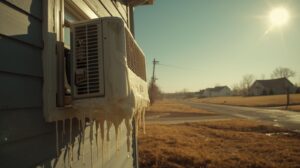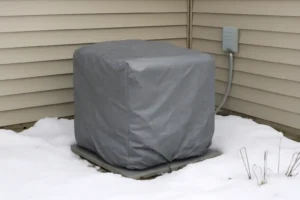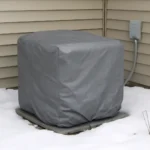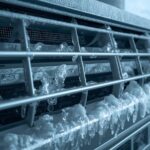Nothing is more frustrating during winter than expecting a warm, cozy home, only to be greeted by cold air from your furnace. If you’ve been wondering why is my furnace blowing cold air, you’re not alone.
This is a common issue, and while it may be alarming, there are various causes that could be behind this problem. The good news is that many of these issues are fixable with just a few simple steps or, in some cases, a professional technician.
In this guide, we’ll explore why your furnace is blowing cold air and provide practical solutions. From thermostat issues to clogged filters and gas supply interruptions, you’ll get clear, actionable advice to get your furnace back to working efficiently.
Why Is Furnace Blowing Cold Air?
When your furnace blows cold air, it can feel like your home is betraying you, especially when temperatures are dropping outside. However, understanding the common causes and furnace troubleshooting tips can save you time, money, and stress.
Here are the potential reasons why your furnace may be blowing cold air, along with troubleshooting steps to resolve the issue.
Common Causes for Furnace Blowing Cold Air
Incorrect Thermostat Settings
- Symptoms: Cold air, incorrect room temperature readings.
-
Why it Happens: Often, the furnace is simply set to the wrong mode or temperature.
-
Solution: Double-check your thermostat settings. Ensure that the thermostat is in heating mode, not cooling, and the fan is set to “auto” (not “on”). When the fan is set to “on,” the blower runs continuously, even when the furnace is not actively heating. This results in cold air blowing through the vents.
Experts Tip: If you have a smart thermostat, ensure that your heating schedule hasn’t been altered by daylight savings time or a power outage.
Dirty or Clogged Air Filters
- Symptoms: Weak airflow, short cycling, frequent furnace shutdowns.
-
Why it Happens: Over time, dust, dirt, and debris accumulate in the air filter, which restricts airflow and prevents the furnace from functioning properly.
-
Solution: Replace or clean your air filter every 1-3 months. A clean air filter ensures proper airflow, prevents the furnace from overheating, and helps maintain energy efficiency.
Bonus Tip: Opt for a high-efficiency pleated filter to trap smaller particles, improving your indoor air quality and furnace performance.
Pilot Light or Flame Sensor Issues
- Symptoms: Furnace not igniting, furnace blowing cold air.
-
Why it Happens: Pilot lights are responsible for igniting the burner. If the light is out, your furnace will not generate heat. For newer models with electronic ignition, a faulty flame sensor may be the issue.
-
Solution: For older models, relight the pilot light by following the manufacturer’s instructions. If you have a modern system with an electronic ignition, contact a professional HVAC technician to inspect and clean the flame sensor if you’re wondering why is my furnace blowing cold air.
Clogged Condensate Drain Line
- Symptoms: Furnace shutting down unexpectedly, furnace blowing cold air.
-
Why it Happens: Some high-efficiency furnaces have a condensate drain line that removes moisture from the system. If this line becomes clogged, it can deactivate the furnace and prevent it from heating.
-
Solution: Inspect the PVC pipe leading from your furnace’s condensate line to the floor drain. Clear any blockages to restore normal function. If you’re unsure, contact an HVAC professional for a proper inspection.
Dirty Flame Sensor
- Symptoms: Furnace starts and shuts off quickly, furnace blowing cold air.
-
Why it Happens: The flame sensor detects the presence of a flame during the combustion process. If the sensor is dirty or faulty, it may prevent the furnace from staying on.
-
Solution: Clean the flame sensor or call a technician to replace it if necessary. Regular maintenance can prevent this issue from recurring.

Overheated Furnace
- Symptoms: Furnace shuts off unexpectedly, cold air blowing after the system turns back on.
-
Why it Happens: An overheated furnace will trigger a safety mechanism to shut the furnace down. This can be caused by a clogged air filter, dirt buildup, or other airflow issues.
-
Solution: Replace the air filter, and check the furnace’s internal components for dirt or debris. If the issue persists, it could indicate a mechanical failure, and you should call an expert.
Ductwork Issues
- Symptoms: Cold air at vents, inconsistent heating throughout the house.
-
Why it Happens: Leaks, holes, or disconnected ducts can cause warm air to escape before reaching the rooms. This results in cold air coming from the vents.
-
Solution: Inspect your ductwork for any visible leaks or damage. Seal small leaks with specialized duct tape or call a professional to perform a complete inspection.
Circuit Breaker Tripped
- Symptoms: Furnace not operating at all, or blowing cold air.
-
Why it Happens: If your furnace is drawing too much power, it may trigger the circuit breaker to shut it down.
-
Solution: Check the breaker panel for a tripped breaker and reset it. If it trips again, call an HVAC technician to inspect the furnace’s electrical components.
When to Call a Professional HVAC Technician
While many furnace problems can be solved with a bit of DIY troubleshooting, some issues require expert intervention. If you’ve been asking why is my furnace blowing cold air, here are some situations when you should call a professional:
- Pilot light and ignition system problems that you cannot resolve.
- Gas supply issues that may involve a gas leak or valve malfunction.
- Ductwork issues that require extensive repairs or replacement.
- Electrical issues with the furnace’s circuit board or fan motor.
A certified HVAC technician can accurately diagnose the problem and ensure that your furnace is repaired safely and efficiently.
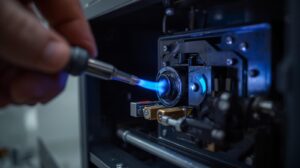
Preventing Furnace Cold Air Issues
Regular maintenance is the key to preventing furnace breakdowns and ensuring your heating system works effectively. If you’ve ever wondered why is my furnace blowing cold air, here are some simple steps to keep your furnace in top shape:
- Schedule annual furnace check-ups with a professional HVAC service provider.
- Replace air filters every 1-3 months, depending on usage.
- Clean ductwork regularly to prevent blockages and leaks.
- Keep thermostat settings consistent and accurate.
- Check pilot lights and flame sensors before the heating season begins.
By performing routine maintenance and addressing issues early on, you can extend the life of your furnace and enjoy a warm, comfortable home throughout the winter. If you’re planning to upgrade or replace your system, we offer professional Airease furnace installation services to ensure reliable performance and energy efficiency.
Conclusion
A furnace blowing cold air is a frustrating problem, but with the right knowledge, it can be easily fixed. Whether you’re dealing with this issue and wondering why is my furnace blowing cold air, or it’s a simple thermostat issue, a clogged filter, or a more complex system failure, there are steps you can take to get your furnace back to working efficiently. If you’re unsure about any of the solutions, don’t hesitate to call a professional HVAC technician. By staying proactive with maintenance and understanding the common causes of cold air problems, you can avoid costly repairs and keep your home warm during the colder months.



